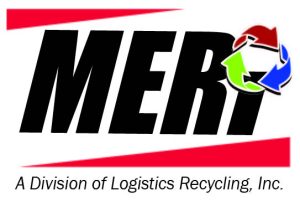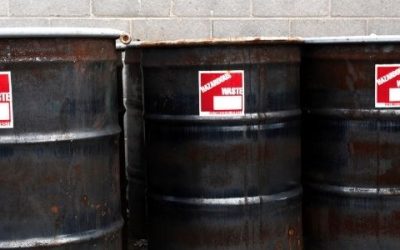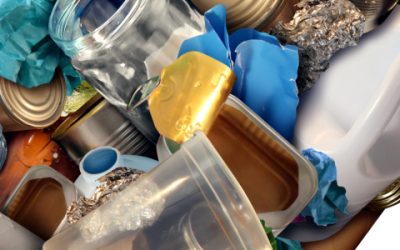It’s time to file your Wi DNR Infectious Waste Report. That means that it’s also time for many of our Wisconsin customers to start pulling their facility’s annual infectious waste numbers from MERI’s customer portal for the WI DNR.
Remember, the report applies to any Wisconsin generator that shipped 50 pounds or more of infectious waste during any 2019 calendar month. It’s not based on an average of those 12 months.
One new feature this year is an electronic signature option.
March 1, 2020 is the deadline to submit your report. A $25 late fee will be tacked on if a report is submitted after that date. Late reports only will be accepted until April 1, 2020.
Did you get an Email from the WI DNR?
If you did not receive the automated email from the WI DNR in December, and your facility operated as a small or large quantity generator at any point in 2019, email DNRMedicalWaste@wisconsin.gov. They’ll send you a Web Access Management System (WAMS) ID. You’ll need this to prepare and submit your report.
If your facility filed in the past, an email should have gone to the contact the WI DNR had on file. However, that email might not have gone to correct person if there was a name change at your facility.
If that’s the case, be sure to update the WI DNR. In the email, describe any changes in your contact information. Also, be sure to add the WI DNR to your safe senders list so that important emails from them don’t end up in your spam file.
Pull What You Need For Your Report through MERI’s Genesis Customer Portal
When it comes to submitting your numbers, you’ll be able to get them within a few clicks of MERI’s Genesis customer portal, downloading everything from number of pickups to pounds processed by waste type.
You can access Genesis through MERI’s home page customer portal using your user name and password. If need be, we can help you to reset this. This video below is a quick tutorial about Genesis features.
Once you are in Genesis, click on the reports tab, and scroll down to the annual summary report tab. There, add the dates you need and hit submit. An excel report will download for you to open and reference.
Other Genesis e-manifest software features
Besides pulling info for your annual report, MERI’s Genesis customer portal software also lets you easily:
- Retrieve manifests that include cradle-to-grave documentation of infectious waste.
- Receive a report detailing the total weight of treated waste by type over a specific date range.
- See a list of manifests by location
- Update your contact information and create a Quicksign electronic signature
- View Training Videos and Download Informational Posters and Guides
What’s the WI DNR’s Definition of Infectious Waste? Who’s A Generator?
The DNR has a great list of what is and isn’t considered infectious waste. Everything you need to know, from the definition of a generator, to who is exempt, can be found here.
The WI DNR Infectious Waste Annual Report Isn’t Just for Hospitals
The Wisconsin Department of Natural Resources’ Infectious Waste Report applies to all Wisconsin infectious waste generators who shipped more than 50 pounds of waste during any month of the previous year. Sorry to keep repeating, but it’s important to stress this point: It’s not just for medical facilities, such as hospitals, clinics or nursing homes. It verifies that both generators and treatment facilities throughout the state are in compliance with regulatory manifesting requirements.
This Infectious Waste Off-Site Treatment report is the first of an annual two-part electronic document within the WI DNR annual Infectious Waste Report. Only hospitals, clinics and nursing homes should complete the second part of the annual filing, which is also known as the medical waste reduction progress report
Being Exempt In The Past Doesn’t Reflect Your Future
Veterinarians, dentists, acupuncturists, tattoo artists, laboratory researchers, manufacturers and small businesses, take note. Just because you may have been exempt from filing the WI DNR Infectious Waste Off-Treatment Report in the past, it doesn’t mean you will be this year.
This is especially true the facility expanded, or had an incident and generated more than 50 pounds of medical waste in any calendar month during the previous year.
Do Funeral Homes have to submit WI DNR Infectious Waste Report?
Wisconsin funeral home directors should be aware that they might need to file if any of their locations shipped more than 50 lbs. of sharps or other infectious waste to a treatment facility during any calendar month of the previous year.
Medical Waste Reduction Plan
Generators that are not a medical facility (hospitals, clinics, and nursing homes) are exempt from completing the second part of the Infectious Waste Off-Treatment Report, also known as the medical waste reduction plan.
However, hospitals, clinics and nursing homes will likely have to complete the medical waste reduction portion of the report. This is simply because these organizations tend to have a lot of medical waste. So, it’s important to review past practices and develop new strategies to reduce future waste production. In addition, you’ll also need to review the plan annually and update it at least every five years.
Are You Exempt from Filing the WI DNR Infectious Waste Report?
Not sure if you have to file one — or both — of the documents in the WI DNR Infectious Waste Report? You can use their handy worksheet to determine if you file. Note the WI DNR highly recommends that exempt facilities notify the DNR of their exempt status yearly. This makes record-keeping easier if there is staff changes at the facility or it fluctuates between exempt and non-exempt status.
According to WI DNR Annual Reports Exemptions and Records, if you are exempt, you should keep records. These include:
- Your infectious waste manifests or records of waste sent off-site for treatment (hospitals, clinics and nursing homes must retain for five years, all others for three years). https://dnr.wi.gov/files/pdf/pubs/wa/wa1801.pdf
- Certificates of destruction or treatment (hospitals, clinics and nursing homes must retain for five years, all others for three years).
- Logs of the amounts sent off-site for treatment and the destination facility.
- Logs of the amounts generated.
- Records related to on-site treatment (see s. NR 526.12, Wis. Adm. Code).
More Information
Everything you need if you are still unsure is on the WI DNR’s Infectious waste annual report web page at http://dnr.wi.gov/topic/HealthWaste/IWReport.html.
After you review the tutorials and the line-by-line instructions, and still have questions, send an email to DNRMedicalWaste@wisconsin.gov and they’ll respond during office hours.
###



